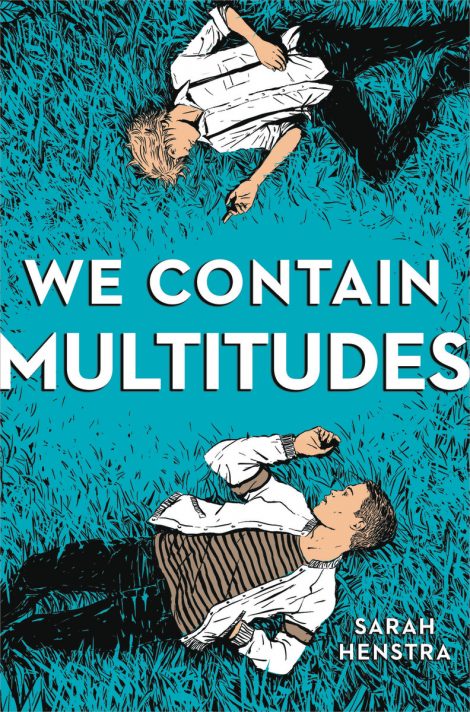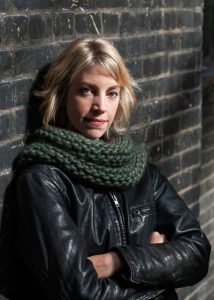
WE CONTAIN MULTITUDES
Aristotle and Dante Discover the Secrets of the Universe meets I’ll Give You the Sun in an exhilarating and emotional novel about the growing relationship between two teen boys, told through the letters they write to one another.
Jonathan Hopkirk and Adam “Kurl” Kurlansky are partnered in English class, writing letters to one another in a weekly pen pal assignment. With each letter, the two begin to develop a friendship that eventually grows into love. But with homophobia, bullying, and devastating family secrets, Jonathan and Kurl struggle to overcome their conflicts and hold onto their relationship…and each other.
Aristotle and Dante Discover the Secrets of the Universe meets I’ll Give You the Sun in an exhilarating and emotional novel about the growing relationship between two teen boys, told through the letters they write to one another.
Jonathan Hopkirk and Adam “Kurl” Kurlansky are partnered in English class, writing letters to one another in a weekly pen pal assignment. With each letter, the two begin to develop a friendship that eventually grows into love. But with homophobia, bullying, and devastating family secrets, Jonathan and Kurl struggle to overcome their conflicts and hold onto their relationship…and each other.
This rare and special novel celebrates love and life with engaging characters and stunning language, making it perfect for fans of Jandy Nelson, Nina LaCour, and David Levithan.
- Little, Brown Young Readers
- Hardcover
- May 2019
- 384 Pages
- 9780316524650
About Sarah Henstra
 Sarah Henstra is a professor of English at Ryerson University. Sarah is the author of the YA novel Mad Miss Mimic and the adult novel The Red Word. Sarah lives in Ontario, Canada.
Sarah Henstra is a professor of English at Ryerson University. Sarah is the author of the YA novel Mad Miss Mimic and the adult novel The Red Word. Sarah lives in Ontario, Canada.
Praise
“We Contain Multitudes is an emotional journey, both heartbreaking and healing. A true love letter to the way family, friendships, and first loves slowly peel away our carefully constructed walls to the layers beneath. Henstra’s words are a universe I never want to escape.” — Julian Winters, author of Running with Lions
“The title of this book is incredibly fitting. Jonathan and Kurl are two complex and fascinating characters, and they instantly drew me into the world created by their letters and their love. It’s an astonishing romance and character study that also happens to be full of gorgeous writing.” — Robin Talley, author of Lies We Tell Ourselves and Pulp
“This is an absolutely extraordinary work of fiction that proves the epistolary novel is an art form. Kurl and Jo are characters to die for, emotionally compelling and empathetic. Their quotidian lives are riveting and their story unforgettable…not to be missed.” — Booklist, starred review
Discussion Questions
1. In a letter to Kurl, Jo writes, “You and I don’t, technically, ‘tell’ each other things, do we? We write them” (p. 54). Jo and Kurl have an easier time communicating with each other through writing—why? Even when they become friends, and eventually fall in love, why is letter writing so compelling to both of them?
2. When asked to identify a hero in their life, Kurl notes, “The thing about heroes is they make you look at yourself” (p. 16). Who do Kurl and Jo identify as their heroes? Why? Do you think they’d answer this question differently by the end of the book?
3. Why does Jo love poetry, and specifically Walt Whitman? What draws him to “Song of Myself”?
4. What is the significance of the Red Eft? Why is Kurl so fascinated by them? What does it reveal about his character?
5. Jo and Kurl often discuss outer worlds vs. inner worlds—like in their discussions of Inner vs. Outer Sanctums, and what they write in their letters vs. what they say aloud to others. Why do you think they do this? How does it affect their relationship?
6. On page 132, how does Kurl interpret the meaning of grass in “Song of Myself”? Why do you think Adam finds this image compelling, and how does it relate to his own life?
7. On page 149, Kurl uses a metaphor of a glass ornament to describe Jo. But in Jo’s response on page 153, he counters arguing that Kurl is the glass ornament. In your opinion, who is the glass ornament?
8. Why is Shayna invested in learning more about her mother? While Jo clearly cares about Raphael, he watches Shayna become more and more obsessed with Raphael from a distance. What does Raphael mean to Shayna, and what does she mean to Jo?
9. Jo is often frustrated that Kurl cannot leave his abusive uncle, to the point where it begins to tear them apart—why do you think Kurl has such a hard time abandoning his family? Why does Jo not understand Kurl’s decisions to stay?
10. What do you think the title means? The first moment the phrase “We contain multitudes” appears is on page 193, when Jo writes the phrase on Kurl’s car window. What is the importance of this scene, and what does it reveal about the entire book?
